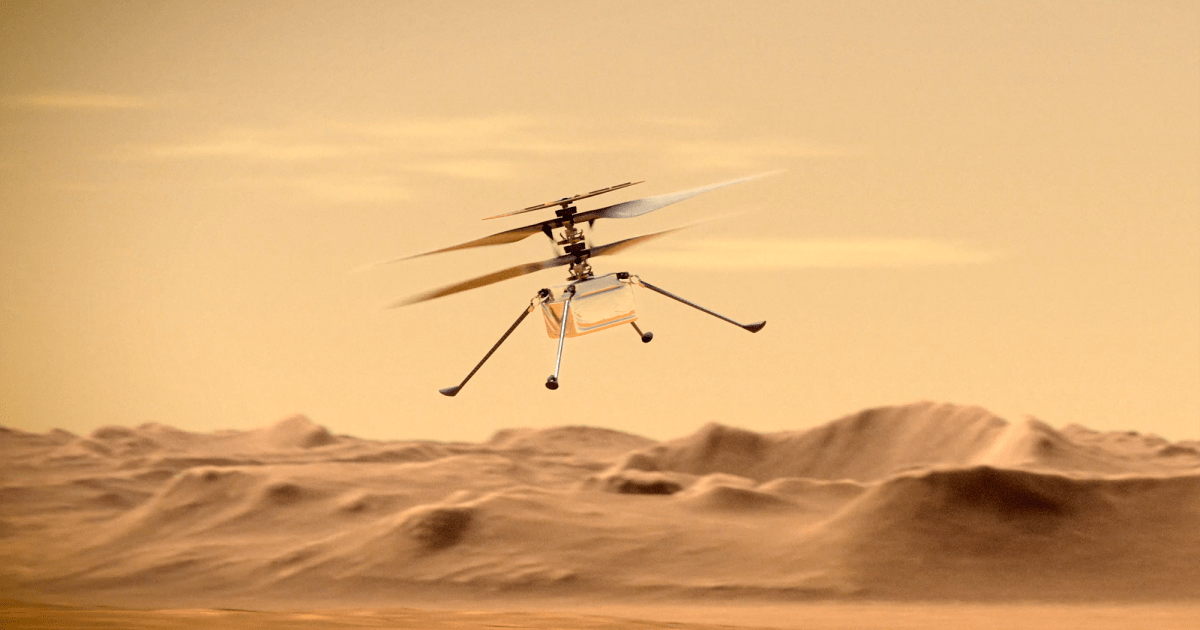NASA’s Mars helicopter, Ingenuity, has taken to the skies again following a month-long break in communications with Earth.
The drone-like flying machine flew for 393 meters and stayed in the air for more than two minutes. Showing no signs of trouble following its extended period on the ground, the helicopter also reached an altitude of 39 feet (11.9 meters) and hit a top speed of 11.9 mph (5,4 meters per second).
NASA’s Jet Propulsion Laboratory, which operates Ingenuity, revealed news of the aircraft’s 67th flight in a post on social media:
The suspension of flights was due to a break in communications between the Ingenuity team and the helicopter, caused by the sun coming between Earth and Mars.
The so-called “solar conjunction” happens every couple of years, and so this is the second time for it to affect NASA’s latest Mars mission, which also includes the Perseverance rover. NASA’s other Mars vehicles — the Curiosity rover and three Mars orbiters — have been operation on and near to the planet for much longer and so have experienced multiple solar conjunctions.
Ingenuity has performed way beyond initial expectations since becoming the first aircraft to perform powered, controlled flight on a planet other than Earth in April 2021.
In fact, it’s impressed NASA so much that it wants to design more advanced aircraft for future missions on Mars and other planets.
Ingenuity arrived on Mars as a technology demonstration, but after proving itself, the JPL team deployed it for gathering aerial imagery of the martian surface using the aircraft’s on-board camera. This imagery has been used to help map safe and efficient routes for the ground-based Perseverance rover, an advantage not available to earlier Mars missions such as Curiosity, Spirit, and Opportunity.
Perseverance continues to explore the martian surface for evidence of ancient microbial life, with scientists aiming to send some of the rover’s collections of rock and soil to Earth for closer analysis.
Editors’ Recommendations


